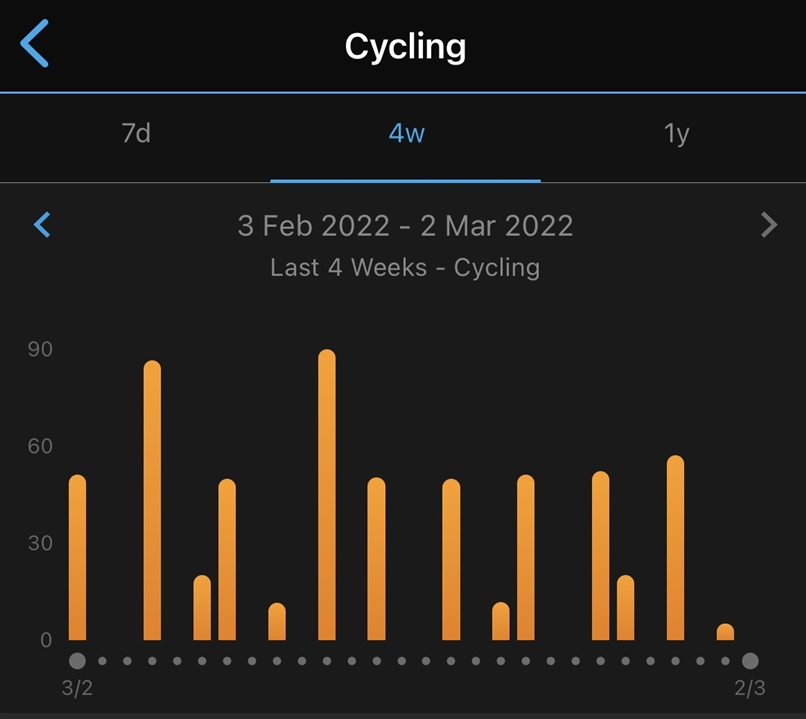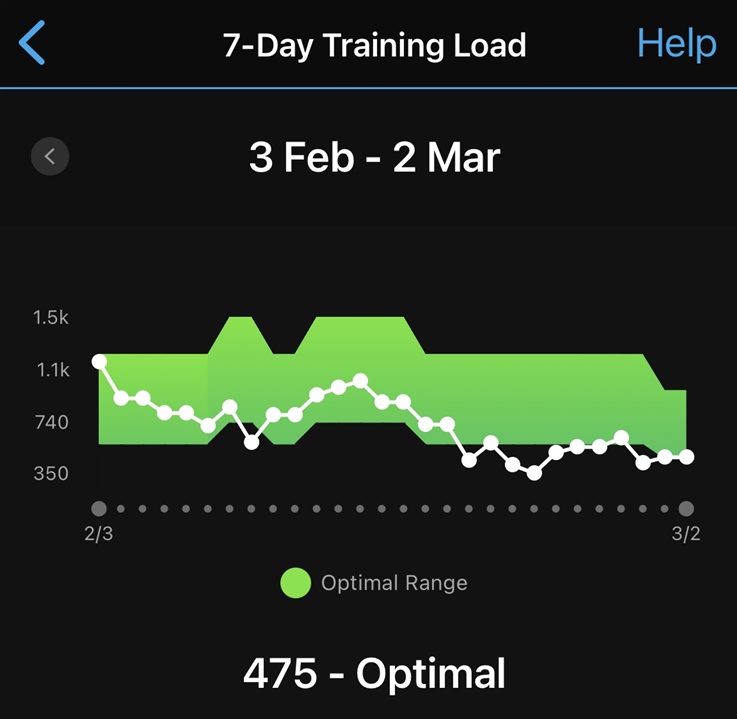Does anyone else have trouble meeting the minimum optimal 7 day training load.
My minimum 7 day load is 722. I like to have one day a week completely free of training. This means I need a load of 120 on all the other days. I mainly run and do crossfit with a bit of hiking or mountain biking on easy days.
I am a 45 year old male and guess I would rate myself as an intermediate runner. My current 10k time is around 43 minutes (although garmin predicts it at 45 minutes) and my best just over 40 minutes. I have starting training again and am wanting to break 40 minutes. Garmins guess at my VO2 max is 50. I mainly run and do crossfit with a bit of hiking or mountain biking on easy days.
This loading is no problem on intense running days however I would normally only do 2 intense (tempo or interval) runs and one long run 8-12 miles a week. My last 8 mile run only yielded a load of 104. I am finding on my recovery days I am having to do a really intense HIIT to hit my load targets. For those that are crossfitters think Murph! for those that are not that is 1 mile run, 100 pull ups, 200 push ups, 300 squats, followed by another 1 mile run, all while wearing a weight vest.
long story short, I am finding that on any day that I am NOT doing a really intense run and doing an easy run or X-training I am having to do 2 reasonably intense workouts or one super intense HIIT a day to meet the optimal 7 day load range. I like to think I push myself pretty hard but this feels like it has overtraining written all over it.
I will say I have only been using Garmin for 3 weeks so perhaps it has not had enough time to compile an accurate assessment of my fitness and recovery requirements but I seriously doubt it is that smart.
Is anyone else having a similar experience.




